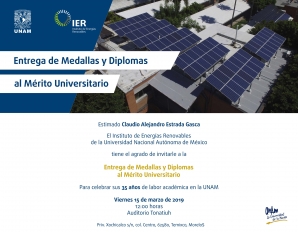Montoya De Los Santos, Hugo J.Cortina-Marrero, M.A.Ruíz-Sánchez, L.Hechavarría-Difur, F.J.Sánchez Rodríguez, Maykel Courel, Hailin Hu
Abstract
In this work, an experimental and theoretical study on CH3NH3PbI3 perovskite solar cells was performed. A theoretical validation of experimental results in perovskite solar cells with efficiencies of 13.32% is presented. An optimization study which involves the spiro-OMeTAD and perovskite thickness’ influence on electrical output parameters (Voc, Jsc, FF and PCE) showed a promotion of solar cell efficiency to 15.50% under 100 nm and 400 nm for hole transport material and absorber, respectively. The importance of the diffusion length of the absorber is discussed. In order to enhance the efficiency, a study of defect density (NT) was applied at the range of 1016 cm−3 (experimental) to 1010 cm−3 (theoretical) where we achieved an efficiency of 20.26%. The present work illustrates the importance of thickness optimization and the reduction of defect density (by the improvement of the quality of processed film) to obtain a better performance of this type of solar cell. Furthermore, the relevance of the implementation of a back contact with higher work function was studied.

